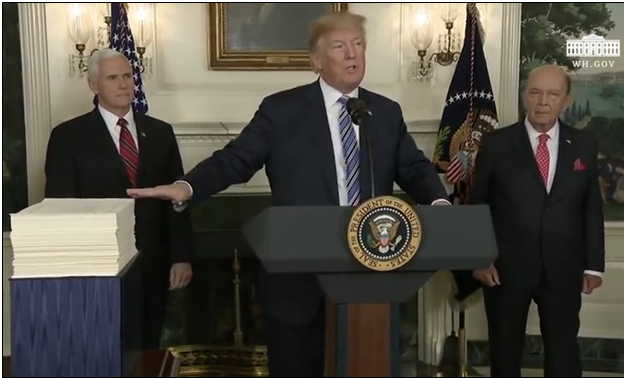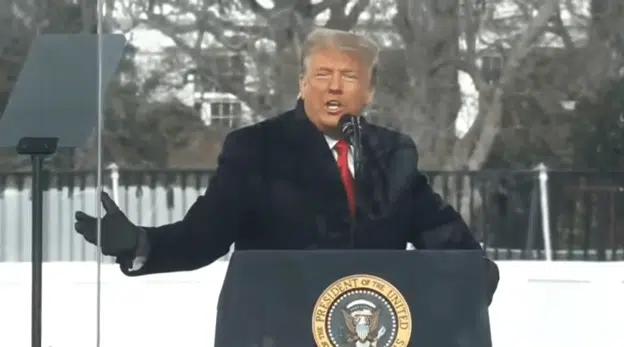By Printus LeBlanc
When the President signed the budget a few weeks ago, it was obvious he was disgusted about having the sign the horrible bill. The only reason the President signed the bill was because the military was in dire straits. Those pushing the bill knew how the President felt about the military and used that against him to get the bloated bill passed. Fear not, however, there is a way the President can reduce some of the spending, while at the same time putting Congressional Democrats up for reelection on the record. The President can and should submit multiple rescissions immediately.
Title X of the Congressional Budget Act of 1974 is known as the Impoundment Control Act. The act divides impoundments into two categories and establishes distinct procedures for each. A deferral delays the use of funds; a rescission is a presidential request that Congress rescind (cancel) an appropriation or another form of budget authority.
To propose a rescission, the President must submit a message to Congress specifying the amount, the accounts and programs involved, the estimated fiscal and program effects, and the reasons for the rescission. Multiple rescissions may be grouped into a single message. After the message has been submitted to it, Congress has 45 days of “continuous session” (usually a larger number of calendar days) during which it can pass a rescission bill. Congress may rescind all, part, or none of the amount proposed by the President.
Rescissions are important because they only require a simple majority vote to pass in both in the House and the Senate. This solves the biggest problem in the Senate, the 60-vote rule. The rule that allows the Senate minority to block any bill, including funding bills, from advancing without getting 60 votes. A rescission only requires 51 votes to pass out of the Senate.
If you read the leftist publications, like the Washington Post, you would think this is an obscure rule that has never been used. This is far from the truth. From 1974 to 1999, the executive branch requested $76 billion in rescissions, and Congress approved $25 billion. It is only since 2000 have Presidents resisted rescissions. President Bush barely chose to use the tactic, and Obama never used it. This gives the President and Republicans in Congress a chance for a much-needed win.
Things are not looking good for the Republicans headed into the midterms, but several rescission bills could change the Republican’s fortune. The President should not request a single rescission through Congress, but dozens. The President should go back to the budget he proposed on March 16, 2017, and work off it when requesting rescissions. The President’s original budget slashed the federal spending by $4.5 trillion over ten years.
From a purely political standpoint, Congress doesn’t even need to pass the rescissions. It would be great if Congress could pass the rescissions, but a string of votes that progressives have to defend in the midterms is enough. The upcoming Senate midterm election map does not appear to favor the left. Make them defend bloated spending and overreaching government programs.
There are 10 Democrat Senators up for reelection in states President Trump won, and forcing them to vote against spending cuts after they voted not to secure the border, would put their seats in jeopardy. Either they vote for the cuts, President Trump gets a win, and the Senators get primary challenged from the extreme left. If they vote against the cuts, they then have to face an angry electorate for gross overspending.
Republicans in Congress forced the President to sign a bad bill. Now they can take some of the sting out of that decision while giving themselves a better chance to maintain control after the midterms. The President should begin submitting rescission requests immediately, and Congress should begin voting on them. Of course, that is if Republicans like being in the majority.
Printus LeBlanc is a contributing editor at Americans for Limited Government.








